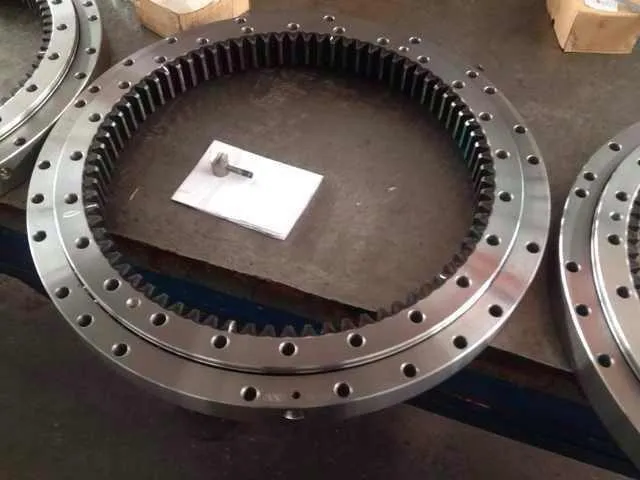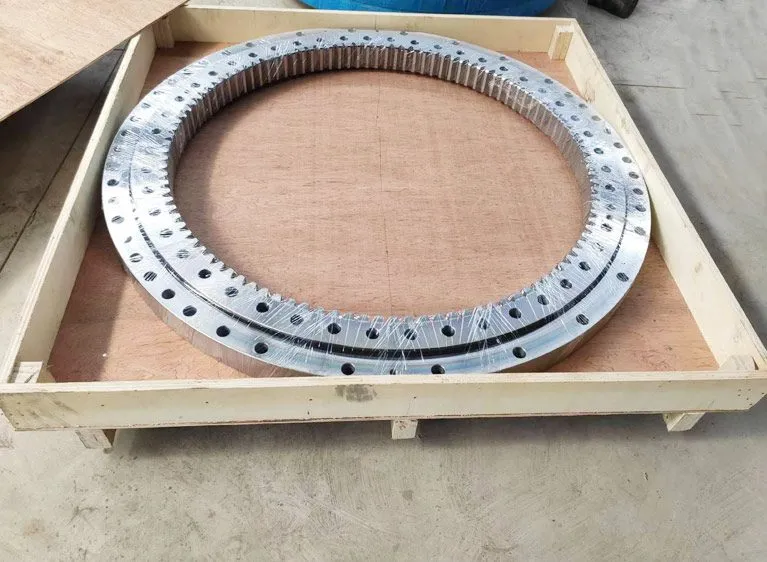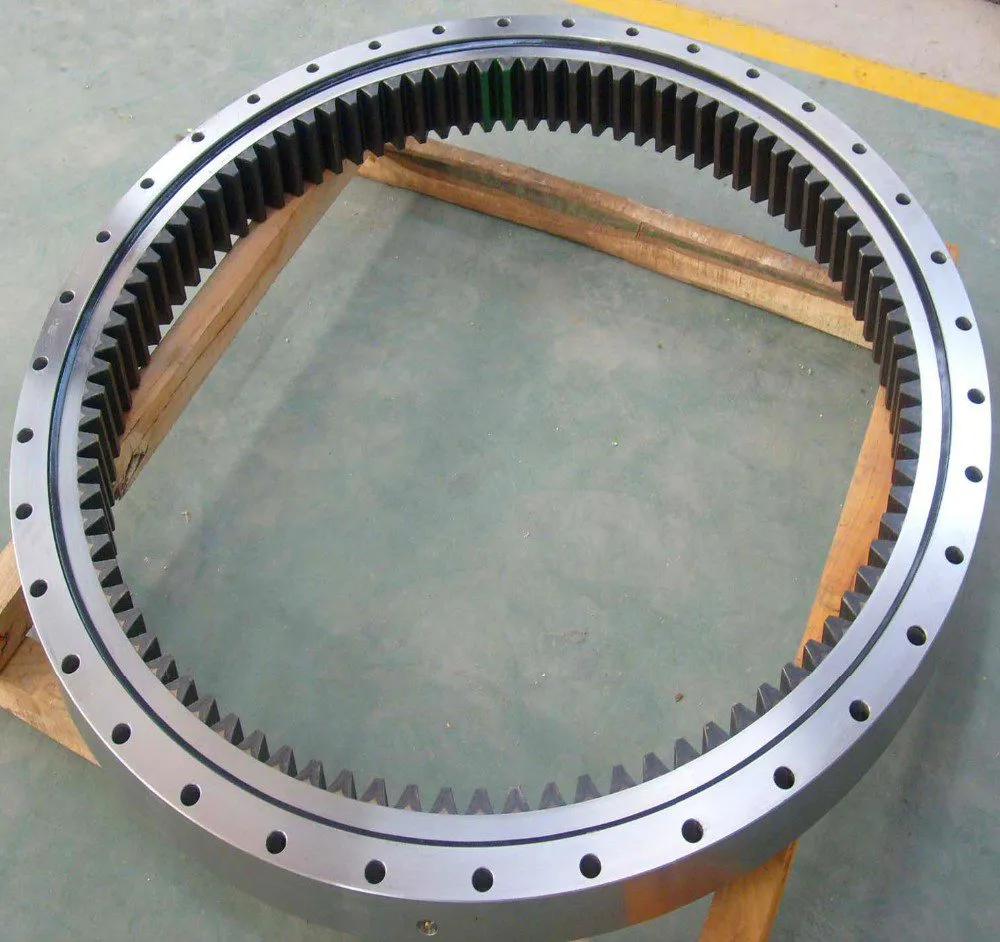
Maintaining the swing bearings in Caterpillar excavators, particularly the E180 model, is crucial for ensuring smooth and efficient operation. These bearings are integral to the rotation of the upper structure of the excavator, enabling it to perform various tasks effectively. In this comprehensive guide, we will discuss the detailed inspection process for E180 swing bearings, including essential steps, tools, and best practices to keep them in top condition.
Swing bearings are essential components of Caterpillar excavators, especially the E180 model. These bearings support and facilitate the rotation of the upper structure, which is necessary for executing tasks such as digging, lifting, and positioning materials. Regular inspection and maintenance of E180 swing bearings are vital to prevent costly breakdowns and ensure the excavator operates at peak performance.
E180 swing bearings are specifically designed for the Caterpillar E180 excavator model. These robust components are engineered to withstand the heavy loads and rotational forces encountered during excavation work. They ensure the smooth rotation of the excavator’s upper structure, allowing for precise and efficient operation.
These specifications highlight the durability and compatibility of the bearings with the E180 model, making them essential components for maintaining the machine’s performance.
Before beginning the inspection process, gather the necessary tools to ensure a thorough and efficient examination. These tools include:

Start by cleaning the area around the swing bearing to remove dirt, grease, and debris. This ensures a clear view of the bearing and its components.
Visually inspect the swing bearing for signs of wear, such as pitting, spalling, or discoloration. Check for any cracks or fractures in the bearing races and rolling elements.
Examine the bearing for adequate lubrication. Dry or insufficiently lubricated bearings can lead to increased friction and wear. Use a grease gun to apply the recommended lubricant if necessary.
Manually rotate the excavator’s upper structure to check for smooth and consistent movement. Listen for any unusual noises, such as grinding or clicking, which may indicate internal damage.
Use measuring tools to check the bearing clearance. Excessive clearance can be a sign of wear and may require bearing adjustment or replacement.
Use a torque wrench to ensure that all bolts securing the swing bearing are properly tightened to the manufacturer’s specifications. Loose bolts can lead to misalignment and increased wear.
Use a grease gun to apply the recommended lubricant to the bearing. Ensure that the lubricant is evenly distributed to all parts of the bearing.
Check the bearing seals for damage or wear. Damaged seals can allow contaminants to enter the bearing, leading to premature wear and failure. Replace any damaged seals as needed.
Regularly monitor the condition of the lubricant. Contaminated or degraded lubricant should be replaced to maintain optimal bearing performance.

Establish a regular inspection schedule to routinely check the condition of the swing bearings. Daily visual checks, along with more thorough monthly inspections, can help detect issues early and prevent major failures.
Ensure that the swing bearings are properly lubricated at all times. Use the recommended lubricant and apply it according to the manufacturer’s guidelines. Over-lubrication can be just as harmful as under-lubrication, so follow the instructions carefully.
Address any issues detected during inspections promptly. Delaying repairs can lead to more severe damage and costly downtime. Replacing worn or damaged components as soon as they are identified can save time and money in the long run.
When replacing swing bearings or other components, use high-quality parts that meet the manufacturer’s specifications. This ensures compatibility and longevity, reducing the risk of future issues.
A: Signs that your E180 swing bearings may need replacement include unusual noises during operation, visible wear or damage, increased friction, and difficulty in rotating the excavator’s upper structure. Regular inspections can help detect these signs early.
A: Regular inspections should be conducted daily, with thorough checks at least once a month. Lubrication should be done according to the manufacturer’s recommendations, typically every 100-200 hours of operation, or more frequently in harsh conditions.
A: While it is possible to install the E180 swing bearing yourself if you have the necessary tools and expertise, it is often recommended to hire a professional. Proper installation is crucial for ensuring the bearing’s performance and longevity, and a professional can ensure it is done correctly.
A: Use a high-quality lubricant that meets the manufacturer’s specifications for your E180 swing bearing. Typically, this will be a heavy-duty grease designed for high-load, high-speed applications. Consult your equipment’s manual for specific recommendations.
A: The weight of the swing bearing, such as the 675 lbs for the Caterpillar E180, indicates its robustness and ability to handle the stresses of excavation work. A heavier bearing typically offers greater durability and reliability, ensuring long-lasting performance under heavy loads.
E180 swing bearings are critical components in the operation of Caterpillar Excavators. The Part # 094-1808 swing bearing, tailored specifically for this excavator, offers durability, reliability, and optimal performance. Ensuring proper maintenance, timely inspection, and correct installation are key to maximizing the lifespan and efficiency of these bearings. By choosing high-quality, compatible parts and following best practices for care, you can keep your excavator running smoothly and efficiently.
In conclusion, regular inspection and maintenance of E180 swing bearings are essential for the smooth operation and longevity of Caterpillar excavators. By following the detailed inspection process outlined in this guide and addressing any issues promptly, you can ensure that your excavator operates at peak efficiency and avoids costly downtime.